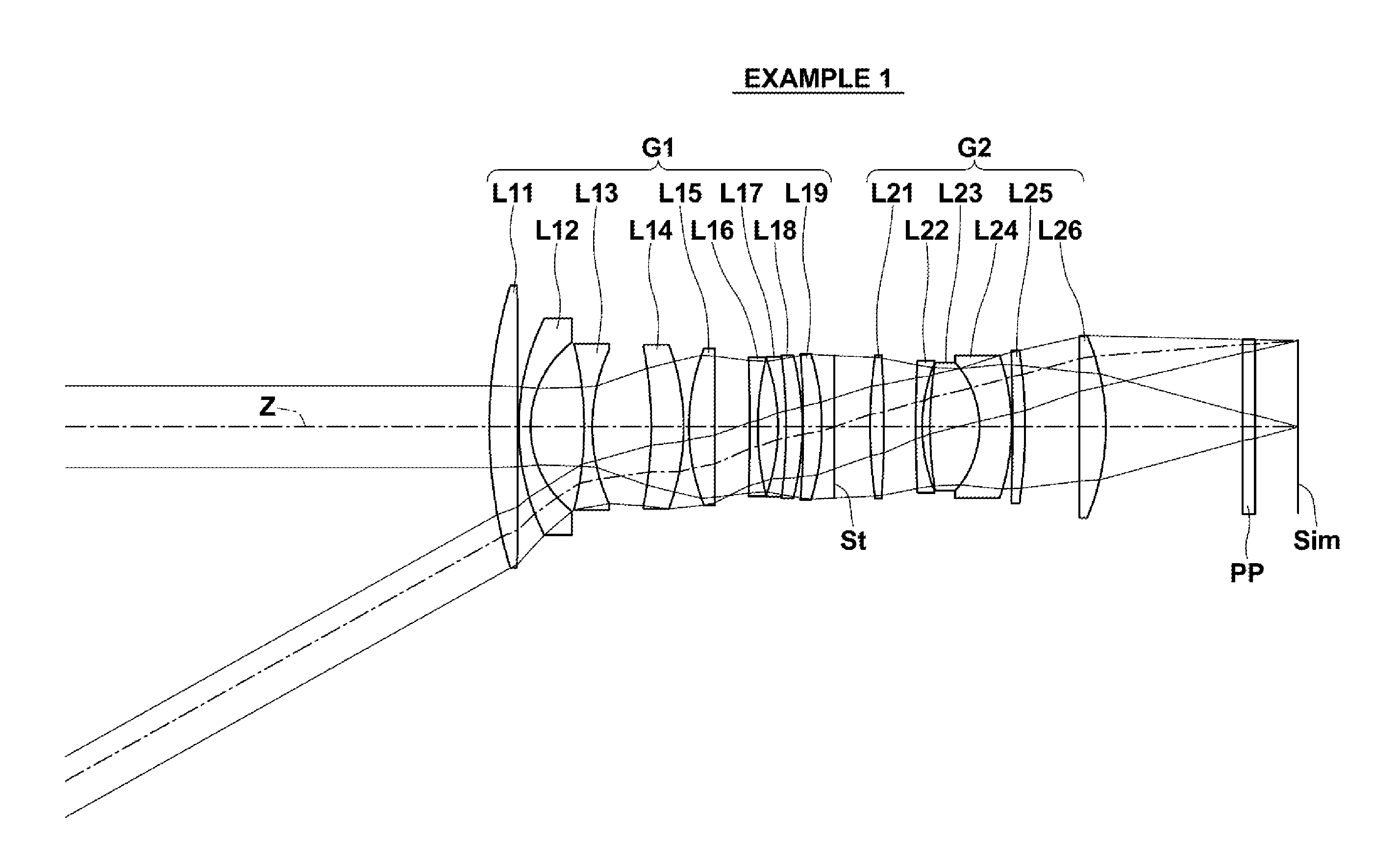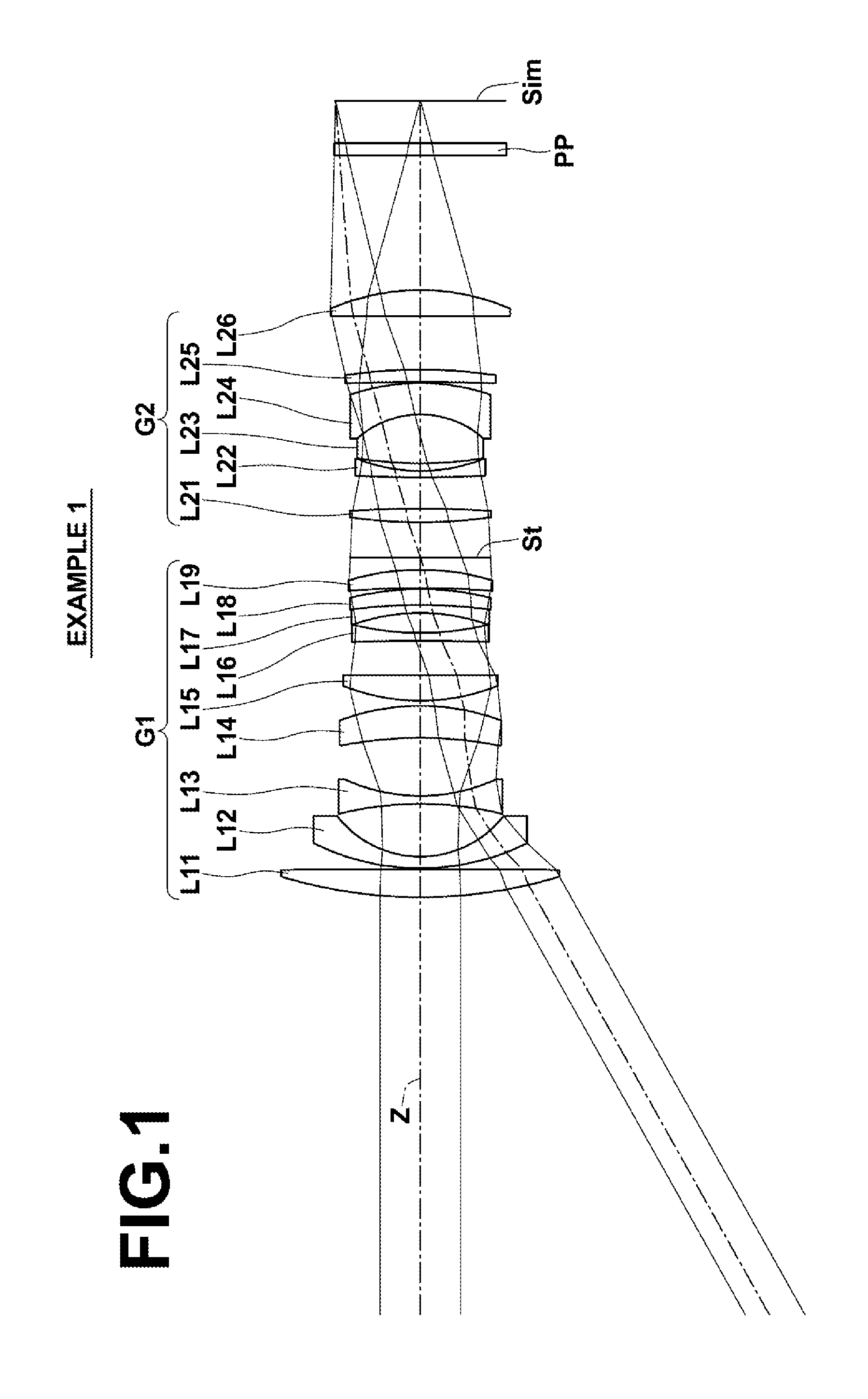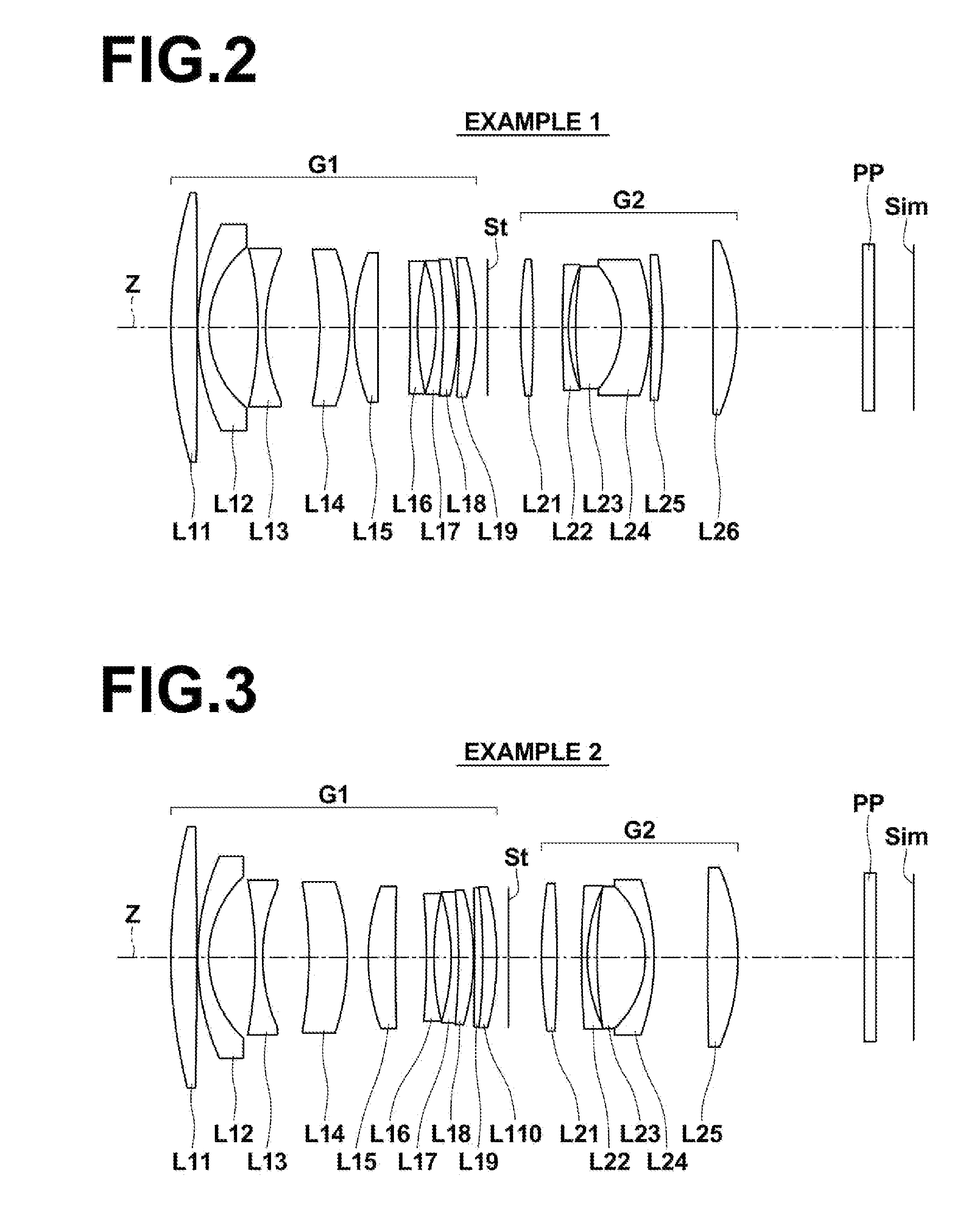Imaging lens and imaging apparatus
a technology of imaging apparatus and lens, applied in the field of imaging lenses, can solve the problems of difficult difficult to correct favorable chromatic aberration, etc., and achieve the effects of facilitating widening the angle of view of the lens system, facilitating distortion correction, and facilitating spherical aberration correction
- Summary
- Abstract
- Description
- Claims
- Application Information
AI Technical Summary
Benefits of technology
Problems solved by technology
Method used
Image
Examples
example 1
[0234]A cross-sectional view illustrating the lens configuration of an imaging lens of Example 1 is shown in FIG. 2. Referring to FIG. 2, a schematic configuration of the imaging lens of Example 1 will be described. This imaging lens consists of a first lens group G1 having a positive refractive power and a second lens group G2 having a positive refractive power in this order from the object side along the optical axis Z. Focusing is performed by moving the entirety of the second lens group G2 along the optical axis Z.
[0235]The first lens group G1 consists of a positive first lens L11, a negative second lens L12, a negative third lens L13, a positive fourth lens L14, a positive fifth lens L15, a negative sixth lens L16, a negative seventh lens L17, a positive eighth lens L18, and a positive ninth lens L19 in this order from the object side along the optical axis Z. Note that the seventh lens L17 and the eighth lens L18 are cemented to each other.
[0236]Meanwhile, the second lens grou...
example 2
[0312]A cross-sectional view illustrating the lens configuration of an imaging lens of Example 2 is shown in FIG. 3. Referring to FIG. 3, a schematic configuration of the imaging lens of Example 2 will be described. This imaging lens consists of a first lens group G1 having a positive refractive power and a second lens group G2 having a positive refractive power in this order from the object side along the optical axis Z. Focusing is performed by moving the entirety of the second lens group G2 along the optical axis Z.
[0313]The first lens group G1 consists of a positive first lens L11, a negative second lens L12, a negative third lens L13, a positive fourth lens L14, a positive fifth lens L15, a negative sixth lens L16, a negative seventh lens L17, a positive eighth lens L18, a positive ninth lens L19, and a positive tenth lens L110 in this order from the object side along the optical axis Z. Note that the seventh lens L17 and the eighth lens L18 are cemented to each other, and the ...
example 3
[0338]A cross-sectional view illustrating the lens configuration of an imaging lens of Example 3 is shown in FIG. 4. Referring to FIG. 4, a schematic configuration of the imaging lens of Example 3 will be described. This imaging lens consists of a first lens group G1 having a positive refractive power and a second lens group G2 having a positive refractive power in this order from the object side along the optical axis Z. Focusing is performed by moving the entirety of the second lens group G2 along the optical axis Z.
[0339]An aperture stop St is disposed between the first lens group G1 and the second lens group G2.
[0340]The number of lenses which respectively constitute the first lens group G1 and the second lens group G2, the lens power arrangement, and the basic shape of each lens are the same as those in the imaging lens of Example 2. Accordingly, the advantageous effects obtained by the number of the lenses, the lens power arrangement, and the basic shape of each lens are the s...
PUM
 Login to View More
Login to View More Abstract
Description
Claims
Application Information
 Login to View More
Login to View More - R&D
- Intellectual Property
- Life Sciences
- Materials
- Tech Scout
- Unparalleled Data Quality
- Higher Quality Content
- 60% Fewer Hallucinations
Browse by: Latest US Patents, China's latest patents, Technical Efficacy Thesaurus, Application Domain, Technology Topic, Popular Technical Reports.
© 2025 PatSnap. All rights reserved.Legal|Privacy policy|Modern Slavery Act Transparency Statement|Sitemap|About US| Contact US: help@patsnap.com



